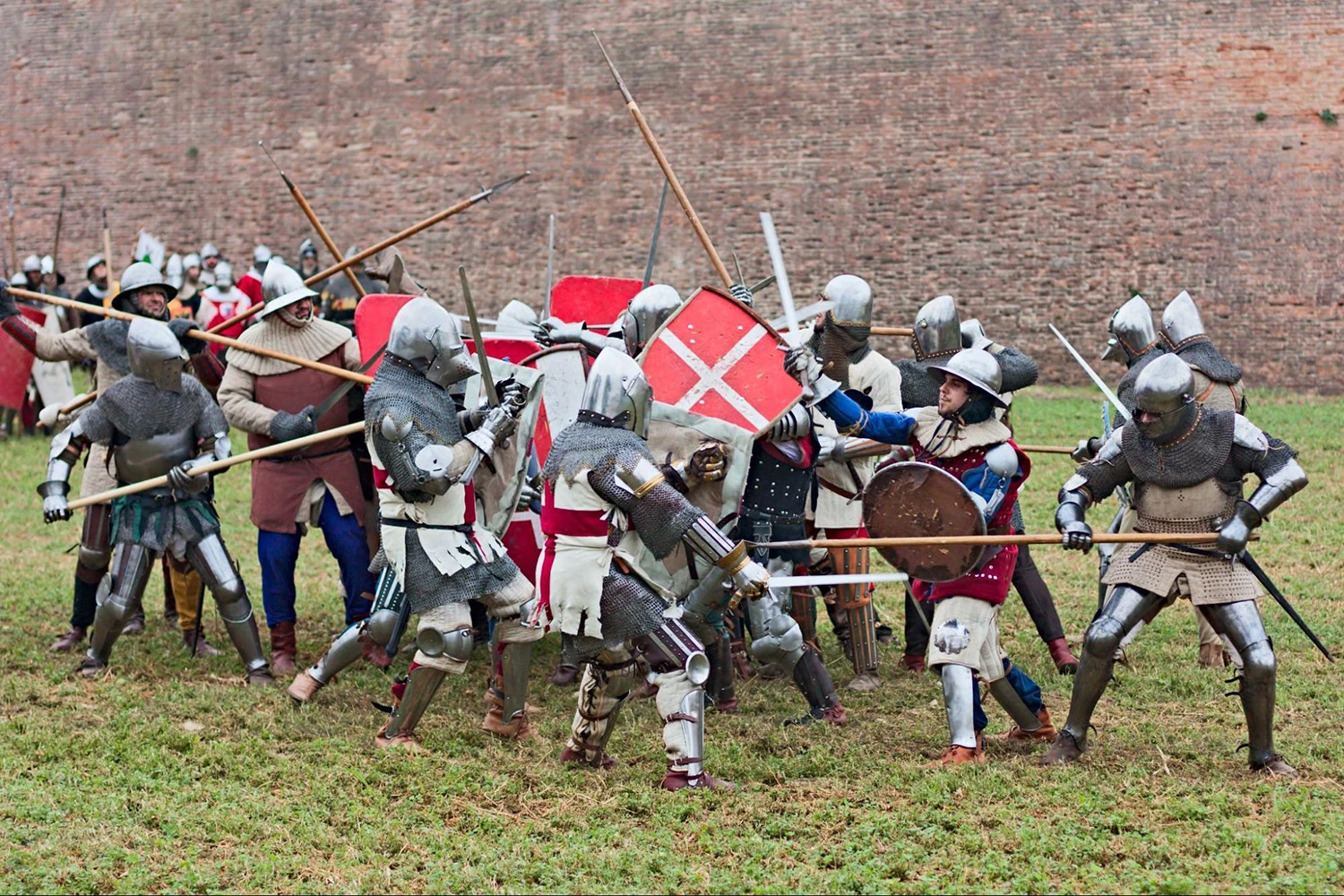Choosing your buhurt armour demands a significant amount of effort and investigation, particularly when it comes to meeting the movement’s authenticity standards. Many warriors select their armor based on looks, personal choice, and economical considerations. Armor should be chosen with consideration, taking into account time period, region, social position, safety, and practicality.
It is critical to analyze how well the provided armor matches the backdrop of your selected representation. Although the level of detail on your armor will demonstrate the realism of your performance, its usefulness should not be forgotten; your armor must provide protection while also allowing for unfettered movement.
Introducing Buhurt Armour: What Makes It Authentic?
Tempered steel plate armor was meant to protect against bladed, impact, and bow-launched weapons. Armour, on the other hand, is more than just a method of protection; it also serves as a symbol of legitimacy. Buhurt armor, in particular, is designed to withstand the rigorous physical demands of frenetic contests. Each item is designed to emulate precision while meeting durability and safety standards. From the elaborate neck protector to the joint, buhurt armor embodies the appearance and thinking of today’s players.
Sabatons, for example, are specialist foot armour for knights that needed the highest level of blacksmithing skill. With enhanced protection, knights could be more active in close battle without fear of foot injury. These boots can be built from two layers of high-quality leather and feature sports inner soles for a comfortable and solid running experience. The use of titanium as the core material makes them lightweight enough to be worn for extended durations.
Knights wear the gambeson, a quilted garment of leather or canvas, under their hardened armor to provide extra protection and absorb the impact of strikes. Practically speaking, the best option is a basic gambeson made of leather or wool. However, a brigandine is worn over a gambeson and is made of metal plates with a fabric foundation. The brigandine armor was designed to be particularly effective against weapons. The overlapping plates protected against cutting attacks and might deflect the impact of maces.
Essential Components of Buhurt Armour
A full ensemble of armor requires one matching armor piece for the head, chest, hands, and feet, which is usually constructed of tempered steel or titanium. Each armor is made using advanced metallurgy and is designed to be resistant enough to fit an athlete who will be wearing it while training and sparring.
You can use numerous materials in your armor configuration. Some parts can be made of tempered steel, while others from titanium. You might customize your arm armor made of lightweight titanium. Your leg armor, on the other hand, might be fashioned of 1.5mm tempered steel because the weight will be distributed predominantly at the waist and hip area.
Titanium is not only highly robust, but also lightweight. Overall, titanium weighs less than steel of the same thickness. With this material, you can wave goodbye to rust because titanium does not corrode when in close contact with water.
Choosing the Right Buhurt Armour for Your Needs
At this point, all you need are gambeson and chausses. If you are very determined to get more, you can obtain an articulated armor arrangement to advance your knightly career. There should also be cushioning beneath your armor. So, the first garment you’ll need for training is a quilted gambeson and stockings.
The primary function of gambeson is cushioning, however it should not be overly thick. Otherwise, overheating and poor movement will bring you down before your opponent. This is why gambesons and stockings have two layers; you’ll be safe but not constrained. The primary purpose of padding is to absorb and distribute the impact of a collision. If you want even more mobility and resistance to overheating, use single layer padding armor.
Maintenance and Safety Tips for Buhurt Armour
In conclusion, Proper maintenance and upkeep are required to preserve your armor’s durability over time. As a result, do not store soft training items in a bag after training; instead, dry a set after each wear. You should also wipe this armor with an alcohol-free sanitizer after each use and avoid washing it in the washing machine—even if you share the helmet with your buddies. When the inner lining becomes soiled, wash it in the washing machine on the delicate cycle at 30°C or by hand with a common brush.
Inspect your metal armor on a regular basis for symptoms of rust. If you find any, respond quickly to avoid further deterioration. To remove tiny rust areas, use a soft-bristled brush or fine-grade sandpaper. Remember to use a rust inhibitor afterwards to prevent recurrence. To keep the armor in good condition and provide a protective barrier against wear, polish it with a metal-friendly wax or oil. Taking these steps will help keep your buhurt armor in immaculate condition.







